Heliocentricity and Theoretical Proofs (part five). The Earth's 'bulge', geosynchronous satellites, space probes, retograde motions.
All offerred as 'proof' for Copernicanism. None of them are valid.
The standard textbook list of ‘proofs’ for heliocentricity usually include this list:
1. Newton’s theory of gravitational attraction (this is false)
2. The Stellar Parallax (is a false claim)
3. Stellar aberration of the Sun (ibid)
4. The Foucault Pendulum (proves nothing)
5. The bulge at the Equator (this post)
6. Geosynchronous satellites (this post)
7. Space probe measurements (this post)
8. Retrograde motion (this post)
9. Star-streaming
10. The Doppler effect
11. Geometric complexity of geocentrism
Prologue
Previous posts have looked at the paucity of real evidence for heliocentricity. Remarkably these failures in experimentation or evidence, are always turned into ‘proofs’ by ‘The Science’. Other models which can explain the same phenomena are dismissed out of hand due to the philosophical-world or universe-view that heliocentricity ‘must be right’. The reality is that there is not a single mechanical proof to support Copernicanism. This post will look at 4 textbook proffered ‘proofs’, namely, the bulge at the equator, geo-synchronous satellites, space probes, and retrograde motions.
# 5 The Chubby Earth
Like your average middle-aged man, the Earth has a noticeable bulge around its waist. Arthur Eddington, the English Quaker, who did more than anyone else to make Einstein a world-wide celebrity, discussed two possible causes for this phenomenon:
“The bulge of the Earth’s equator may be attributed indifferently to the Earth’s rotation or to the outward pull of the centrifugal force introduced when the Earth is regarded as non-rotating” (Eddington p. 24)
‘The Science’ has no quibble with Eddington’s explanation from a century ago.
The above means that the Earth will be subjected to both centrifugal gravitational pulls, and centripetal Coriolis forces, when it is rotating in a fixed universe (Copernican); or if the universe is rotating around a fixed Earth. (Tychonic, geo-centric). These two forces create the ‘oblation’ of the Earth, regardless of the model in question. These forces are what induce a flattening at the poles, and the paunch around the stomach or equator. It has nothing to do with either a spinning Earth, or a mobile Earth.
Such an explanation is similar to that of the Foucault pendulum, another non-proof of heliocentricity which ignores centripetal forces and the Coriolis force. Given that other models can easily explain the Earth’s oblation and bulge at the equator, this cannot be considered proof of anything. In fact, the Tychonic model with its emphasis on the Coriolis force and the Euler force, is likely a more elegant and reasonable explanation than that offered by Copernicans (source, Britannica 3).
# 6 Geosynchronous Satellites
A geosynchronous satellite is usually defined as:
“…an orbital period the same as the Earth’s rotation period. Such a satellite returns to the same position in the sky after each sidereal day, and over the course of a day traces out a path in the sky that is typically some form of analemma. A special case of geosynchronous satellite is the geostationary satellite, which has a geostationary orbit – a circular geosynchronous orbit directly above the Earth's equator. Another type of geosynchronous orbit used by satellites is the Tundra elliptical orbit.”
Does an object orbiting a complete cycle within a sidereal day (star time, 23 hours 56 minutes, 4 seconds), really prove heliocentricity?
Balancing act
At about 22,242 miles from our planet’s surface there is a balance of forces between gravity, the inertial forces of the Earth, the Sun, the Moon, and the stars. At this altitude the satellite will be in a geostationary orbit, remaining indefinitely in the same position in space. In the heliocentric view, the satellite needs enough speed to keep up with Earth’s rotation.
In the Copernican vision, given that the Earth rotates on its axis at 1054 mph at its equator, the geosynchronous satellite must be given a velocity of about 7000 mph in the west-to-east direction to keep up with Earthly rotation. Since space is virtually frictionless, the 7000-mph speed will be maintained mainly by the satellite’s inertia, with additional thrusts interspersed as needed to account for anomalies. If the satellite keeps the 7000 mph, it will remain at 22,242 miles above the planet and not be pulled down by the Earth’s gravity.
This follows the Newtonian model in which the inertia of the geosynchronous satellite causes it to move in a straight line, or its inertial path, but the Earth’s gravity seeks to pull it toward Earth. The result is that the satellite will move with the Earth in a circular path.
In the Tychonic-geocentric version, the Earth and the satellite are stationary while the universe, at the altitude of 22,242 miles, is rotating at 7000 mph east-to-west. Identical to the heliocentric version, the satellite must be given a velocity of 7000 mph (west-to-east) to move against the 7000-mph velocity of the rotating space (east-to-west). The combination of the universe’s centripetal force (centrifugal plus Coriolis) against the satellite’s speed of 7000 mph, along with the Earth’s gravity on the satellite, will keep the satellite hovering above one spot on the fixed Earth (source Britannica 3).
Stationary
The satellite’s altitude above the Earth will determine the velocity needed to keep the satellite at this chosen altitude. Due to the pull of gravity, the closer the satellite is to Earth the faster it must move to counteract gravity and maintain its altitude.
The heliocentric system explains this phenomenon by viewing the Earth as rotating with a 24-hour period, while the geostationary satellite remains motionless in space. Newton’s law of gravitation provides a mathematical framework to explain the locus of the balance. In the Copernican model therefore, at a specific location on Earth right over the equator, one will see the satellite directly overhead at one specific time during the day.
In the geocentric system, however, the Earth is not rotating; rather, the whole of space is rotating around the Earth, which carries the satellite with it (Wikipedia, geocentrism entry). In this case we might call it a stellar-stationary satellite instead of a geostationary satellite. For some, this is a puzzling phenomenon since it appears that the satellite should just fall to Earth, but this can be explained in both the heliocentric and geocentric systems.
Why doesn’t it fall?
It might seem that a geosynchronous satellite that is stationary with respect to a fixed Earth should also fall. Newtonian mechanics has a defect since it cannot deal with accelerated frames of reference, such as a rotating universe around a fixed Earth. It can only deal with non-accelerated or inertial frames, such as absolute space. But a spinning roulette wheel for example or a spinning universe are, indeed, accelerated frames and thus not strictly applicable in Newtonian mechanics.
The only way Newtonian mechanics can deal with accelerated frames is to add the very things that accelerated frames (such as a rotating universe) produce, namely, the three inertial forces: centrifugal, Coriolis and Euler. In this way, the added inertial forces balance the force of gravity. This insertion of inertial forces is consistently done in Newtonian mechanics when predictions of movement need to be made in accelerated frames. Without adding in the three inertial forces, Newtonian mechanics would not work in accelerated frames (see other posts on Coriolis).
In the case of the geosynchronous satellite, Newtonian mechanics must add the centrifugal, Coriolis and Euler forces so that the satellite, can remain stationary in a rotating (accelerating) universe. As noted in other posts, Mach and Einstein compensated for the Newtonian defect by incorporating accelerated frames into their physics. In their post-Newtonian physics, a rotating universe produces the necessary centrifugal, Coriolis and Euler forces to balance out the gravitational pull from the Earth, and thus the satellite can remain fixed over one spot on the Earth at an altitude of 22,242 miles.
The above simply means that using Mach and Einstein’s postulates we cannot use geosynchronous satellites as a form of proof for heliocentricity. Nor does it mean that the Earth is rotating, as given by satellite images described in the next section.
#7 Probing and imaging
In 1995 the European Space Agency launched the SOHO or the Solar and Heliospheric Operations space probe. In the heliocentric system, SOHO is stationary and the Earth is rotating underneath it. In the geocentric or geo-helio-centric system, the Earth is stationary and SOHO is being carried by the universe, through the ether, which rotates around a fixed Earth.
As with the balancing forces for a geostationary satellite, SOHO is placed so that the balance of gravity and inertial forces between the Earth, the Sun, the Moon and the stars are such that it can remain in the same relative position in space. From time to time the SOHO will take snapshots and pictures of the Earth. It is claimed that these images show the Earth rotating within a 24-hour period. This is however not the test question. We want to view the Earth, mobile in space, moving around the Sun. SOHO does not help us with this.
(SOHO snapshot of the Earth, from Feb 27 2024, 1 am)
When you view the images provided by SOHO and NASA you will see that these photos do not prove that the Earth is rotating. Indeed in this NASA animation of the rotating Earth, no visible motion is detected whatsoever (video). The best that could be offered, is that if some movement is noticeable (as with the geostationary satellite), there might be some relative rotation between the SOHO satellite and the Earth. There is no evidence, not even in NASA’s timed imagery, that the Earth has rotated. It might be that the SOHO satellite is the only object moving. Given that no motion of the Earth is at all visible from their images, this seems more likely.
Even more disturbing for the Copernicans, no Earthly motion through space or the ether is given by the SOHO images, calling into question, yet again, the supposed mobility of the Earth, along with its lack of observable rotation. Both of these conclusions are never to be found in the endless apologia of ‘proofs’ of heliocentricity, which happily list SOHO as concrete proof of heliocentricity! The entire purpose of SOHO was to prove the Earth’s rotation which it decidedly has not done. Quite the opposite.
#8 Retrograde motion of the Earth
A long-standing problem, known to ancient astronomers, is that of planetary retrograde motions. Mercury, Venus, Mars, Jupiter, and Saturn, appear as bright stars that move along paths inclined to the ecliptic by only a few degrees. Their observed periods of motion with respect to the Sun range from 116 days for Mercury, 584 for Venus and 780 days for Mars.
These planets move west to east through the stars like the Sun and moon do, but from time to time the planets halt their eastward motion and move backward, east to west, before resuming their normal eastward motion. In principle, each of the planets, as viewed from Earth, will create a retrograde motion, although some, due to their proximity to Earth, will have more pronounced retrogrades. This is true of Venus and Mars, the latter’s path being the most eccentric.
Explanation of Retrograde Motion
Various astronomy texts and other science publications have consistently appealed to this phenomenon as a proof for heliocentrism. After stellar parallax and light aberration, it is probably the 3rd most popular ‘proof’ for heliocentricity. Science textbooks illustrate the occurrence with elaborate diagrams, websites use sophisticated java script animations, both purporting that only the heliocentric model has an explanation for retrograde motion (source; Physics in my view).
Heliocentric explanation of Retrograde motion - Video
Unfortunately for the Copernican triumphalists, both the geocentric model, or the geo-helio centric model (the Tychonic) explain the phenomenon of retrograde motion just as well as the Copernican model. The video below is a good animation clip of how geocentrists explain the retrograde motions of the planets. Since the Copernican, Ptolemaic and the Tychonic models can incorporate the same geometrical distances between the planets and the Sun, all models in principle, can account for retrograde motion, and they will do so in identical geometrical proportions.
Geocentric explanation for Retrograde motion
Model’s and views
Sunworshippers explain retrograde motion in a simple and straightforward way. The planets closer to the Sun move more quickly than planets farther away from the sun. Hence, the Earth travels more quickly than the ‘superior planets’, or planets that are further from the Sun than the Earth. Moving more quickly and traveling in a smaller orbit, the Earth overtakes the ‘superior planets’ each synodic period (or the time between 2 successive appearances in the sky, of a planet). From the perspective of the Earth, as this occurs, the superior planets appear to move backward. In the same way, as one car passes other cars, the passed cars appear to move backward.
In a similar manner ‘inferior planets’, or planets orbiting closer to the Sun than the Earth does, go through a retrograde motion as they overtake the Earth each synodic period. This is of course relative, not absolute motion but on the Earth, we cannot discern this (source: Britannica 3, 4).
Heliocentric Retrograde Motion
Figure 1: The Earth and Mars are revolving counterclockwise around the sun. The red line represents the appearance of Mars’ motion against the fixed stars, as viewed from Earth.
Figure 2: As Earth overtakes Mars in their respective orbits around the sun, Mars appears to move backward against the fixed stars.
Figure 3: As Earth begins to revolve downward, Mars is moving more laterally, giving the appearance that Mars is resuming its forward course against the fixed stars.
In the Ptolemaic model, complex epicycles were used to explain this backward motion of planets. This is used as proof against geo-centricity, and it is indeed an issue with Ptolemy’s model. Copernicus, however, uses more epicycles than Ptolemy, a fact dismissed by Copernicans as irrelevant, but it is entirely relevant, given the foundation for their theory is its supposed simplicity. In the Tychonic model, retrograde movement can however be straightforwardly explained.
Geocentric Retrograde Motion
In the Tychonic system, all the planets orbit the Sun, and the inner planets appear retrograde for an observer on Earth, when they are in front of the Sun and going in the opposite direction, because their apparent radial motion is greater. The outer planets appear retrograde when they are opposite the Sun, because in effect they are being pulled along while in their slow orbit of the Sun. Since the motion that dominates is the Sun's, and they are on the opposite side of the Earth from the Sun, they appear to be in retrograde motion for an observer on Earth as given in the images above (Britannica, 3, 4).
Figure 4: The Sun is revolving counterclockwise around the Earth as Mars is revolving around the sun. The red line represents Mars’ motion against the fixed stars.
Figure 5: As the sun begins to move further in its orbit and carry Mars with it, Mars will appear to slow its speed and reverse its course against the fixed stars.
Figure 6: As the Sun moves even further in its orbit, Mars moves to the left, thereby causing it to appear to resume its forward course against the fixed stars.
As the above diagrams illustrate there is no difference to the observed phenomena between the 2 models. The geometric maths are also equivalent in both cases. This means that retrograde motion is not a proof of heliocentricity.
Bottom Line
We have looked at 4 standard proofs for Copernicanism, namely, the bulge at the equator, geosynchronous satellites, space probes, and planetary retrograde motions. The only one that makes a strong case for heliocentrism is that of retrograde motions. But even here, the argument is neutral given that the Tychonic model (and indeed other models) can explain the same effect in a simple framework.
The bulge of the Earth is better explained by the Tychonic theory and geosynchronous satellites, along with space probes, cannot differentiate between Copernicanism or Tychonism. Space probes do not prove the Earth’s rotation and do not show us a moving Earth through the ether. This must be a large problem for Copernicans, but as with all disproofs, it is repurposed to support their model!
Scientifically, given geometric equivalence, ‘The Science’ cannot claim any of the 4 as proof of anything. If we did have ‘real science’ Copernicanism would be known as a theory, not a fact and other models would also be discussed and pursued in research. Based thus far on the proofs forwarded, there can be no claim that Copernicanism is mechanically or observationally proven.
The next post will finish looking at the remaining key theoretical claims for heliocentricity; namely, star streaming, the Doppler effect and the apparent geometrical complexity of geocentrism.
Sources
Arthur Eddington Space, Time and Gravitation: An Outline of the General Relativity Theory, 1923
Wikipedia's overview of the geocentric model and its mechanisms for explaining retrograde motion and other astronomical phenomena
Britannica 1- Britannica's entry on the geocentric model, providing historical background and detailing Ptolemy's contributions
Britannica 2 - Britannica article specifically discussing Ptolemy's use of deferents and epicycles to explain retrograde motion and the adjustments made to account for observational discrepancies
Britannica 3 - Britannica article explaining the Tychonic system
Britannica 4 - Britannica article on the absence of observable parallax as one of the key arguments Tycho used to support his system
Socratic.org - A concise summary of how Ptolemy's model accounted for retrograde motion using epicycles and deferents
Physics in My View article on the Tychonic model
===Related Posts
Heliocentricity and Theoretical proofs (part three). Stellar parallax and light aberration.
Heliocentricity and Theoretical proofs (part two). Universal forces ignored by Heliocentricity
Heliocentricity and Theoretical proofs (part one). Newtonian gravitation
Heliocentricty and Scientism (part 3). Georges Sagnac and the ‘Sagnac effect’
Heliocentricity and Scientism (part 2)



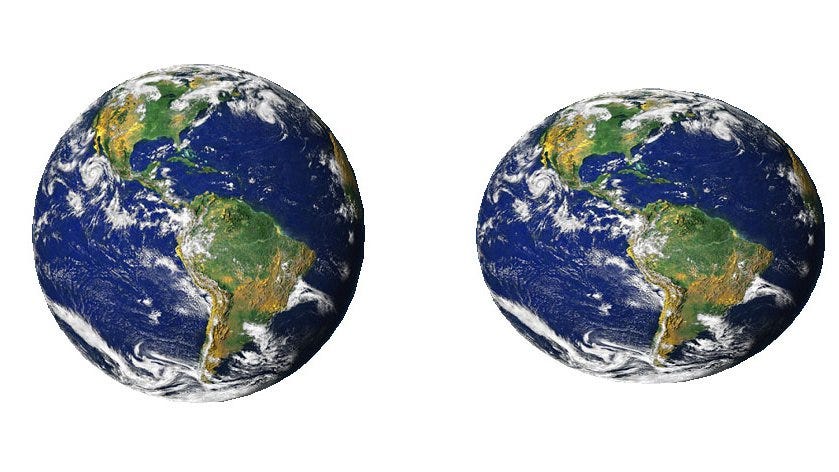
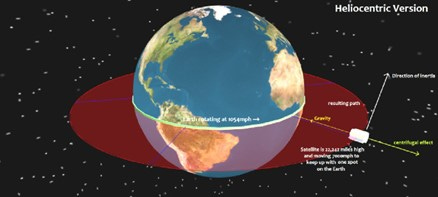
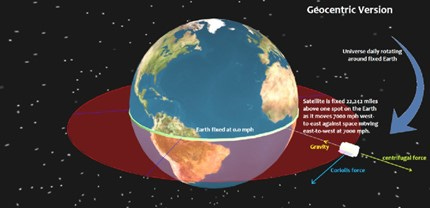
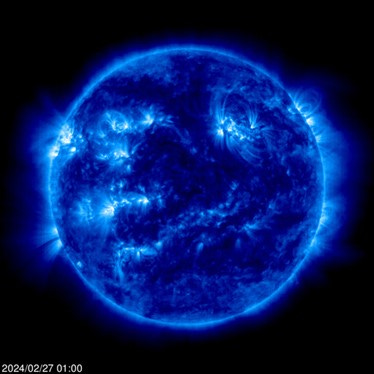

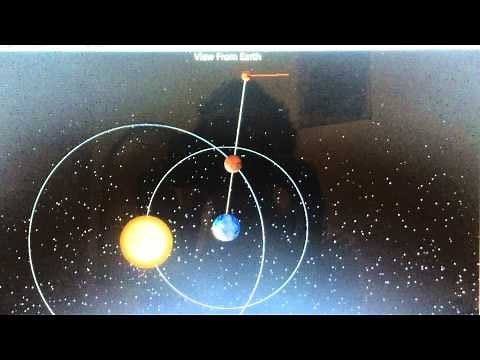
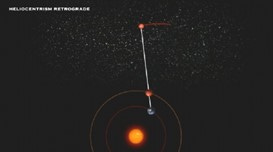
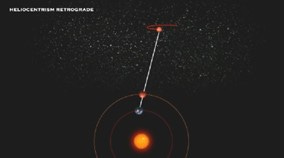
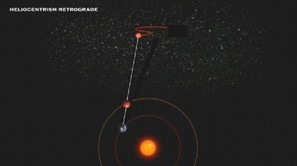
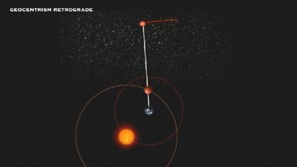
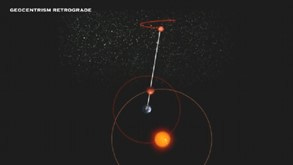
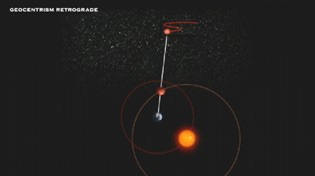
Just excellent. A terrific and concise summary. Thanks for the bibliography. I hope you will collect this series and posts into a book and publish it. For 40 years I have wanted answers to these key questions and wanted - above all - an overview of the field with the terms of the debate clearly described. This you have done here most excellently. I never had the time to do this research myself so thanks to you for doing it. It seems to me that this shakes the very foundations of the whole rotten edifice that is modern "science" and reveals that it is no more or less true than a thousand types of thought that went before. And once we are freed by your posts from the illusion of scientific infallibility we are free to accept all forms and types of knowledge as equally valid and more or less useful. I think what I have always disliked most about "science" is the insufferable arrogance - together with its disdain for history, morality, religion, philosophy - to name but a few.